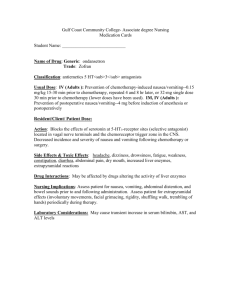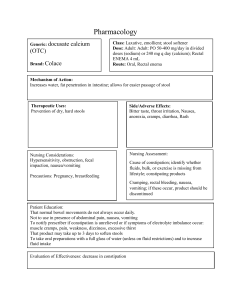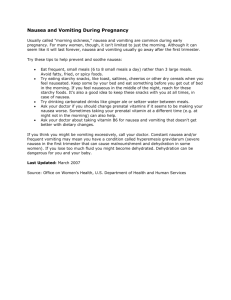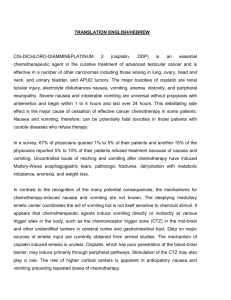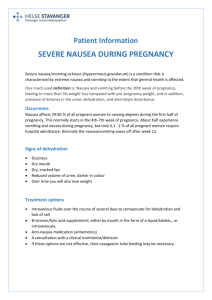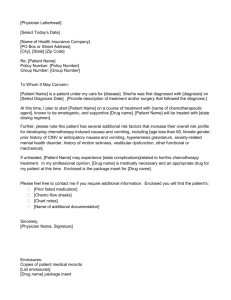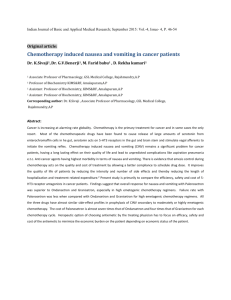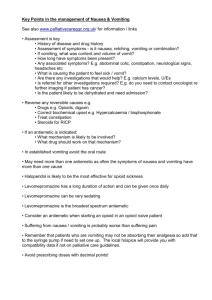Nausea & Vomiting Nursing Care Plan - Haematology
advertisement
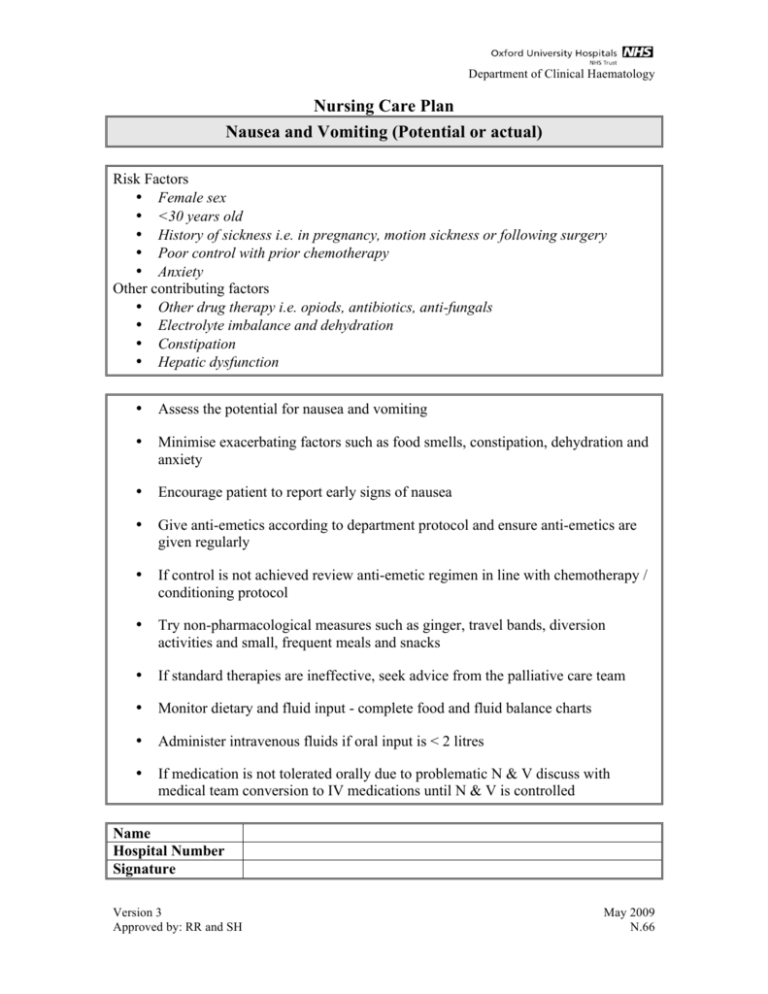
Department of Clinical Haematology Nursing Care Plan Nausea and Vomiting (Potential or actual) Risk Factors • Female sex • <30 years old • History of sickness i.e. in pregnancy, motion sickness or following surgery • Poor control with prior chemotherapy • Anxiety Other contributing factors • Other drug therapy i.e. opiods, antibiotics, anti-fungals • Electrolyte imbalance and dehydration • Constipation • Hepatic dysfunction • Assess the potential for nausea and vomiting • Minimise exacerbating factors such as food smells, constipation, dehydration and anxiety • Encourage patient to report early signs of nausea • Give anti-emetics according to department protocol and ensure anti-emetics are given regularly • If control is not achieved review anti-emetic regimen in line with chemotherapy / conditioning protocol • Try non-pharmacological measures such as ginger, travel bands, diversion activities and small, frequent meals and snacks • If standard therapies are ineffective, seek advice from the palliative care team • Monitor dietary and fluid input - complete food and fluid balance charts • Administer intravenous fluids if oral input is < 2 litres • If medication is not tolerated orally due to problematic N & V discuss with medical team conversion to IV medications until N & V is controlled Name Hospital Number Signature Version 3 Approved by: RR and SH May 2009 N.66

